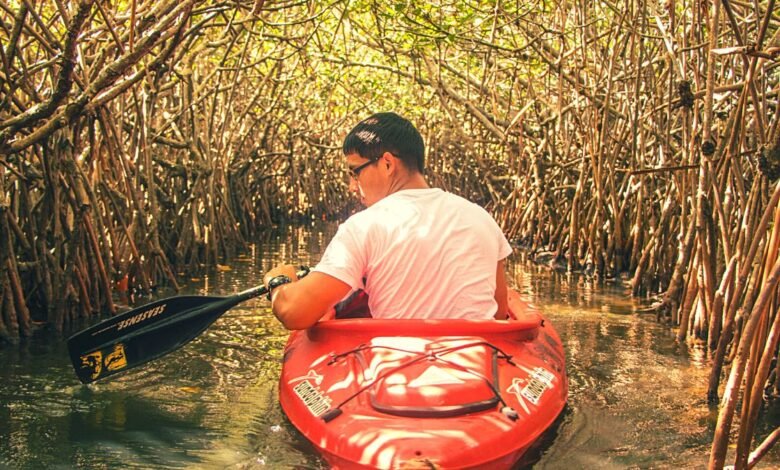Mangroves Face Rapid Decline
UNESCO claims that Mangrove soils are extremely efficient carbon sinks that sequester enormous amounts of carbon
Mangroves serve as a natural coastal defence against calamities, protecting millions of lives and billions of dollars. Mangroves also decrease the effects of storms and manage coastal erosion. It needs to be noted that they had reduced the effects of the Southeast Asian tsunami in 2004.
Mangroves serve as a natural coastal defence against calamities, protecting millions of lives and billions of dollars. Mangroves also decrease the effects of storms and manage coastal erosion. It needs to be noted that they had reduced the effects of the Southeast Asian tsunami in 2004.
Biodiversity of the Mangrove Ecosystem
Mangroves perform as the first line of defence against flooding and storm events in many areas. A wave can lose two-thirds of its energy in just 100 meters of a mangrove forest. Also, they are considered to be a vital part of marine ecosystems because they grow along tropical coastlines and in saltwater conditions at the meeting point of land and sea. The health of many other habitats depends on the mangroves.
According to UN estimates, a hectare of mangrove forest can hold 3,754 tonnes of carbon, which is the same as removing more than 2,650 cars from the road for an entire year.
Mangroves around the world have an equal amount of carbon to around 21 gigatons of carbon dioxide. In addition, mangroves support a diverse fauna, including 341 species that are globally endangered, from tigers to seahorses.
Geographical Distribution
As mangroves cannot resist sub-freezing conditions, they can only be found near protected coastlines in tropical or subtropical latitudes. They all have the special ability to flourish in soil that is salted and within the reach of the tides. According to statistics, about 135,881 square kilometres, or 11.96% of the world’s coastline, is covered by mangroves.
Mangroves are Dying
As mangroves are losing three to five times more quickly than the total forest area lost, these rich ecosystems, which are also essential for coping with and mitigating climate change, are in grave danger.
According to estimates, between 1980 and 2005, several nations lost more than 40 percent of their mangrove forests frequently as a result of coastal development.
According to the State of the World’s Mangroves 2021 report, Southeast Asia and North, Central, and the Caribbean experienced the largest net losses of mangroves, totalling 6 percent and 7percent, respectively.
Threats to Mangroves
Mangrove habitats are threatened by human activity and are disappearing more quickly than inland tropical forests, while being extremely complex and immune to natural factors. The delicate environmental adaptations of a mangrove tree are thrown off balance by rising sea levels and sedimentation, which inhibit or kill the trees’ growth. In addition to deforestation and coastal development, human-induced thermal, agrochemical, nutrient, heavy metal, and oil-spill pollution have a significant negative impact on this delicate ecosystem.
Mangrove Restoration is Still Possible
International organisations, such as UN institutions and conservation non-governmental organisations (NGOs), are continuing their protection efforts to stop the alarming reduction of mangroves by carrying out a series of research and initiatives and by keeping track of mangrove resources for conservation with the intention of promoting sustainable management and protection of mangrove ecosystems.
The typical rates of mangrove loss around the world are currently slowing down, and despite challenges from outside sources, mangroves are being regenerated in their native habitats. However, people from all over the world must come together as allies for these vital systems in order to properly restore mangrove populations and benefit from them for future generations.
Although the Global Mangrove Alliance uses a variety of methods to work toward protecting mangroves, the alliance offers real-time maps of mangrove estates around the world. These alliances work with an aim to bring together governments, NGOs, scientists, and local populations.







